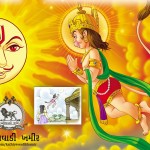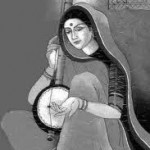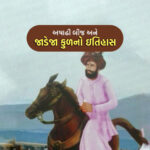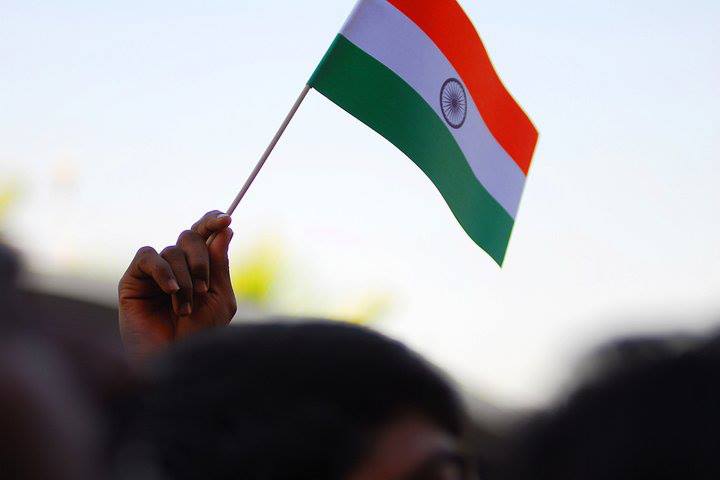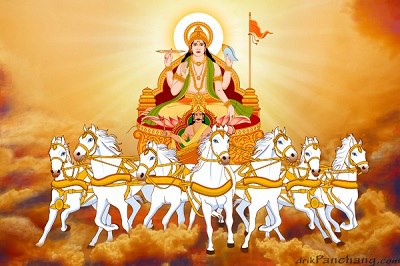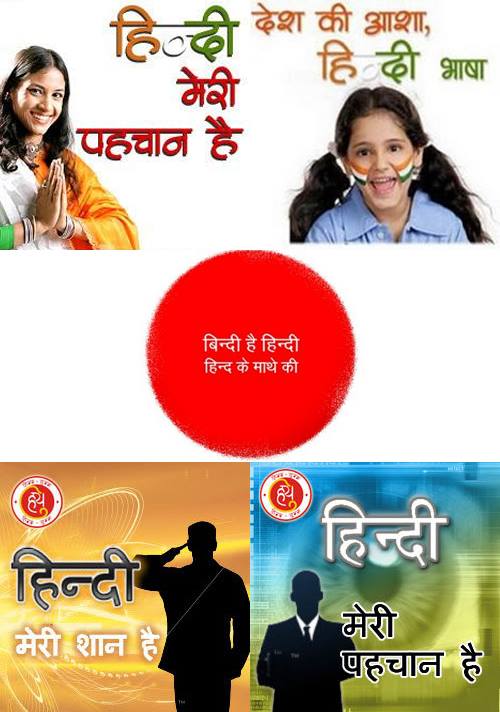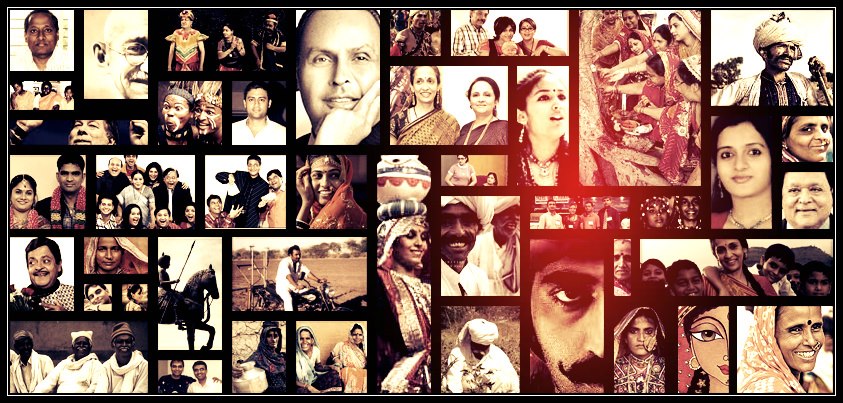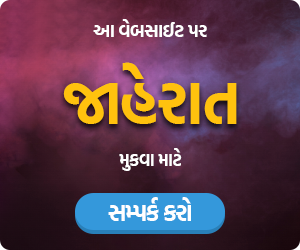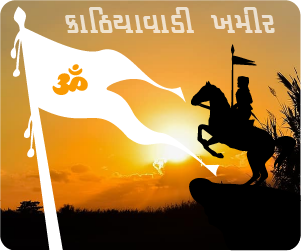સ્વતંત્રતા દિવસના પવન અવસરે આટલું જાણો આપણા રાષ્ટ્ર ધ્વજ વિષે
ભારતનો રાષ્ટ્રીય ધ્વજ, ભારતના લોકોની આશાઓ અને આકાંક્ષાઓનુ પ્રતિરૂપ છે. આ અમારા રાષ્ટ્રીય ગૌરવનુ પ્રતિક છે. બધાના માર્ગદર્શન અને હિત માટે ભારતીય ધ્વજ સંહિતા-2002માં બધા નિયમો, રિવાજો,ઔપચારિકતાઓ અને નિર્દેશોને એકસાથે લાવવાનો પ્રયત્ન કરવામાં આવ્યો છે. ધ્વજ સંહિતા-ભારતના સ્થાન પર ભારતીય ઘ્વજ સંહિતા-2002ને 26 જાન્યુઆરી 2002થી લાગૂ કરવામાં આવ્યુ છે.
ઝંડો લહેરાવવાની યોગ્ય રીત:
- જ્યારે પણ ત્રિરંગો લહેરાવવામાં આવે તેને સન્માનપૂર્ણ સ્થાન આપવામાં આવે. તેને એવી જગ્યાએ પર લગાવવામાં આવે, જ્યાંથી તે સ્પષ્ટ રીતે દેખાય.
- સરકારી ભવન પર ઝંડો રવિવારે અને અન્ય રજાઓના દિવસે પણ સૂર્યોદયથી સૂર્યાસ્ત સુધી લહેરાવવામાં આવે છે, વિશેષ પ્રસંગો પર તેને રાત્રે પણ લહેરાવી શકાય છે.
- ઝંડાને સદા સ્ફૂર્તિથી લહેરાવવો જોઈએ અને ધીરે ધીરે આદરપૂર્વક ઉતારવો જોઈએ. લહેરાવતી વખતે અને ઉતારતી વખતે બિગુલ વગાડવામાં આવે છે, તેથી એ વાતનુ ધ્યાન રાખવામાં આવે કે ઝંડાને બિગુલના અવાજ સાથે જ લહેરાવવો અને ઉતારવો જોઈએ.
- જ્યારે ઝંડો કોઈ ભવનની બારી, બાલકની અથવા આગળના ભગમાં આડો કે ત્રાંસો લહેરાવવામાં આવે તો ઝંડાને બિગુલના અવાજની સાથે જ લહેરાવવામાં અને ઉતારવામાં આવે.
- ઝંડાનુ પ્રદર્શન સભા મંચ પર કરવામાં આવે છે તો તેને એ રીતે લહેરાવવામા6 આવે કે જ્યારે બોલનારનુ મોઢુ શ્રોતાઓ તરફ હોય તો ઝંડો તેના જમણી બાજુ હોય.
- ઝંડો કોઈ અધિકારીની ગાડી પર લગાડવામાં આવે તો તેને સામેની બાજુ અને વચ્ચેવચ અથવા કારની જમણીબાજુ લગાડવામાં આવે.
- ફાટેલો અથવા મેલો ઝંડો લહેરાવવામાં નથી આવતો.
- ઝંડો માત્ર રાષ્ટ્રીય શોકના પ્રસંગ પર જ અડધો નમેલો રહે છે.
- કોઈ બીજા ઝંડા કે ધ્વજ-પતાકાઓને રાષ્ટ્રીય ઝંડાથી ઉંચા કે ઉપર નહી લગાવવામાં આવે, ન તો બરાબરીથી મુકવામાં આવશે.
- ઝંડા પર કંઈપણ લખેલુ કે છપાયેલુ ન હોવુ જોઈએ
- જ્યારે ઝંડો ફાટી જાય અથવા મેલો થઈ જાય તો તેને એકાંતમાં સંપૂર્ણ રીતે નષ્ટ કરવામાં આવે
Flag code of India
History
The code, written in 2002 was merged with the following acts: Provisions of the Emblems and Names (Prevention of Improper Use) Act, 1950 (No.12 of 1950) and the Prevention of Insults to National Honour Act, 1971 (No. 69 of 1971) and came into effect from January 26, 2002 as Flag Code of India,2002 (successor to the Flag Code – India, the original flag code). Advocate B M Birajdar said, “The Flag Code of India 2002 permits unrestricted display of the tricolour, consistent with the honour and dignity of the flag,”
The Flag Code of India has been divided into three parts:-
- First Part: General Description of the National Flag.
- Second Part: Display of the National Flag by members of public, private Organizations & educational institutions etc.
- Third Part: Display of National Flag by Central or State Governments and their organizations and agencies.
General Description
The National flag of India is officially described in the Flag Code of India as follows: “The colour of the top panel shall be India saffron (Kesari) and that of the bottom panel shall be India green. The middle panel shall be white, bearing at its centre the design of Ashoka Chakra in navy blue colour with 24 equally spaced spokes.” It was adopted in its present form during a meeting of the Constituent Assembly held on 22 July 1947, when it became the official flag of the Dominion of India. The flag was subsequently retained as that of the Republic of India. In India, the term “tricolour” (Hindi: तिरंगा, Tirangā) almost always refers to the Indian national flag. The flag is based on the Swaraj flag, a flag of the Indian National Congress designed by Pingali Venkayya.
Khadi or hand-spun cloth is the only material allowed to be used for the flag, and flying a flag made of any other material is punishable by law with imprisonment up to three years, besides a fine. Raw materials for khadi are restricted to cotton, silk and wool. There are two kinds of khadi used: The first is the khadi-bunting which makes up the body of the flag, and the second is the khadi-duck, which is a beige-coloured cloth that holds the flag to the pole. The khadi-duck is an unconventional type of weave that meshes three threads into a weave, compared to the two weaves used in conventional weaving. This type of weaving is extremely rare, and there are fewer than twenty weavers in India professing this skill. The guidelines also state that there should be exactly 150 threads per square centimetre, four threads per stitch, and one square foot should weigh exactly 205 grams (7.2 oz).
Display
The rules regarding the correct methods to display the flag state that when two flags are fully spread out horizontally on a wall behind a podium, their hoists should be towards each other with the saffron stripes uppermost. If the flag is displayed on a short flagpole, this should be mounted at an angle to the wall with the flag draped tastefully from it. If two national flags are displayed on crossed staffs, the hoists must be towards each other and the flags must be fully spread out. The flag should never be used as a cloth to cover tables, lecterns, podiums or buildings, or be draped from railings. Whenever the flag is displayed indoors in halls at public meetings or gatherings of any kind, it should always be on the right (observers’ left), as this is the position of authority. So when the flag is displayed next to a speaker in the hall or other meeting place, it must be placed on the speaker’s right hand. When it is displayed elsewhere in the hall, it should be to the right of the audience. The flag should be displayed completely spread out with the saffron stripe on top. If hung vertically on the wall behind the podium, the saffron stripe should be to the left of the onlookers facing the flag with the hoist cord at the top.
The flag, when carried in a procession or parade or with another flag or flags, should be on the marching right or alone in the centre at the front. The flag may form a distinctive feature of the unveiling of a statue, monument, or plaque, but should never be used as the covering for the object. As a mark of respect to the flag, it should never be dipped to a person or thing, as opposed to regimental colours, organisational or institutional flags, which may be dipped as a mark of honour. During the ceremony of hoisting or lowering the flag, or when the flag is passing in a parade or in a review, all persons present should face the flag and stand at attention. Those present in uniform should render the appropriate salute.
When the flag is in a moving column, persons present will stand at attention or salute as the flag passes them. A dignitary may take the salute without a head dress. The flag salutation should be followed by the playing of the national anthem.
The privilege of flying the national flag on vehicles is restricted to the President, Vice-President, Chief Justice and Other Justice of Supreme court and Prime Minister, Governors and Lieutenant Governors of states, Chief Minister,Chief Justice and Justice of High court of States, Union Ministers, members of the Parliament of India and state legislatures of the Indian states (Vidhan Sabha and Vidhan Parishad), and flag officers of the Army, Navy and Air Force. The flag has to be flown from a staff affixed firmly either on the middle front or to the front right side of the car. When a foreign dignitary travels in a car provided by government, the flag should be flown on the right side of the car while the flag of the foreign country should be flown on the left side. The flag should be flown on the aircraft carrying these Constitutional Post President, Vice-President, Prime Minister, Chief Justice of India, Speaker [Lok Sabha] on a visit to a foreign country. Alongside the National Flag, the flag of the country visited should also be flown; however, when the aircraft lands in countries en route, the national flags of the respective countries would be flown instead. When carrying the President within India, aircraft display the flag on the side the President embarks or disembarks; the flag is similarly flown on trains, but only when the train is stationary or approaching a railway station.
When the Indian flag is flown on Indian territory along with other national flags, the general rule is that the Indian flag should be the starting point of all flags. When flags are placed in a straight line, the rightmost flag is the Indian flag, followed by other national flags in alphabetical order. When placed in a circle, the Indian flag is the first point and is followed by other flags alphabetically. In such placement, all other flags should be of approximately the same size with no other flag being larger than the Indian flag. Each national flag should also be flown from its own pole and no flag should be placed higher than another. In addition to being the first flag, the Indian flag may also be placed within the row or circle alphabetically. When placed on crossed poles, the Indian flag should be in front of the other flag, and to the right (observer’s left) of the other flag. The only exception to the preceding rule is when it is flown along with the flag of the United Nations, which may be placed to the right of the Indian flag.
When the Indian flag is displayed with non-national flags, including corporate flags and advertising banners, the rules state that if the flags are on separate staffs, the flag of India should be in the middle, or the furthest left from the viewpoint of the onlookers, or at least one flag’s breadth higher than the other flags in the group. Its flagpole must be in front of the other poles in the group, but if they are on the same staff, it must be the uppermost flag. If the flag is carried in procession with other flags, it must be at the head of the marching procession, or if carried with a row of flags in line abreast, it must be carried to the marching right of the procession.
Half-mast
The flag should be flown at half-mast as a sign of mourning. The decision to do so lies with the President of India, who also decides the period of such mourning. When the flag is to be flown at half mast, it must first be raised to the top of the mast and then slowly lowered. Only the Indian flag is flown half mast; all other flags remain at normal height. The flag is flown half-mast nationwide on the death of any of these Constitutional Authorities during duty period are President, Vice-president,Chief Justice of India, Speaker [Lok Sabha] . It is flown half-mast in New Delhi and the state of origin and their respective departments all over India. Half mast of flag for the Supreme court Judge and top Union Ministers in their departments and Origin States. On deaths of Governors, Lt. Governors and Chief Ministers, Chief Justice of High Courts and for Judge of the flag is flown at half-mast in the respective states and union territories and for High Court Judges and top Cabinate Ministers respective origin district. If a death coincides with Republic Day (26 January), Independence day (15 August), Gandhi Jayanti (2 October) or state formation anniversaries, the flag should not be flown half-mast except over buildings housing the body of the deceased dignitary. However, even in such cases, the flag must be raised to full-mast when the body is moved from the building. Observances of State mourning on the death of foreign dignitaries are governed by special instructions issued from the Ministry of Home Affairs in individual cases. However, in the event of death of either the Head of the State or Head of the Government of a foreign country, the Indian Mission accredited to that country may fly the national flag at half-mast. On occasions of state, military, central para-military forces funerals, the flag shall be draped over the bier or coffin with the saffron towards the head of the bier or coffin. The flag should not be lowered into the grave or burnt in the pyre.
English Text Source : Wikipedia

